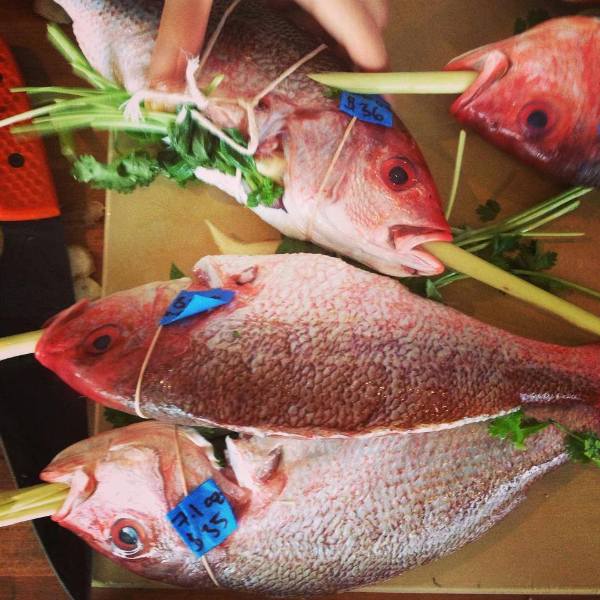Eat Fish Heads, Save World
By Melissa Wiley in Food on Mar 26, 2014 7:40PM
Eating the odd eyeball or ear has long been a foodie rite of passage. It’s called showboating, and it’s fun. It’s also of shock value only in certain corners of the globe, because many cultures, those of Southeast Asia and parts of Africa in particular, feast on what we still call sea scraps—i.e. fish heads—on a near daily basis. But Westerners may be catching up, as more of us muster the courage to eat entrees that stare back at us, boiled eyes wide open.
For every tender thigh or belly gracing our plates, of course, that still leaves one head with two peepers. When we don’t eat the whole enchilada, so to speak, we’re not only getting minimal bang for our buck but helping to exacerbate pollution produced by processing plants busy breaking these tasty by-products down, typically for livestock feed or fertilizer, if they’re not tossed back into the oceans outright. This while contributing to the nasty ripple effects of overfishing and denying ourselves the joys of the collar and cheek, often a fish’s most succulent eats.
Fish heads also, for the record, contain higher percentages of vitamins, minerals and fatty acids than your everyday boneless fillet. The problem then? Cultural taboos against eating eyes have taken some deep root. And a single trip to Chinatown usually isn’t enough to break them.
That said, Chinatown isn’t a bad place to start. Many a fish soup or fish head curry offers a baleful gaze from a pair of lidless eyes but also proves just tasty enough to stomach. A visit to Sze Chuan, for instance, allows you to try Song Sao fish soup. But your best bet may be an excursion to Go 4 Food, where the steamed fresh whole fish invites you to devour every part you can.
Back in 2011, Nellcote’s Jared Van Camp publicly challenged The Southern’s Cary Taylor to devise a recipe incorporating fish eyes for The Reader’s “Key Ingredient” feature. Taylor created an oyster stew but found he couldn’t buy isolated fish eyes, which meant that he ended up cooking the grouper cheeks as well, using more of the fish head than he had originally planned. The cheeks he described as having a light yet firm texture that enhanced the soup’s flavor. The eyeballs, he reported, contributed little more than texture.
Mott Street, meanwhile, serves a whole silk snapper at market price and a veritable fish head feast feeding six for $250. Even the leeks here taste wicked delicious, so as soon as I can round up five souls game for some eyeball action, I’m there. Frontier also offers a $28 fish fry with a whole red snapper.
These may seem like slim pickings, but expect more fish heads to come. The United Nations Food and Agriculture Organization recently issued a statement calling for suppliers to maximize market potential by supplying more fish heads to consumers. This in the face of the fact that Asian and African markets still remain the most receptive to eating the whole fish, while Americans may soon be ingesting more of theirs in fish-oil supplement form.
According to the journal Trends in Food Science and Technology, Norwegian fishermen relegated roughly 220,000 tons of edible fish by-products to the seas in 2011 alone. Two to three pounds of head and scraps are also produced for every pound of boneless, skinless meat, according to the National Marine Fisheries Service.
